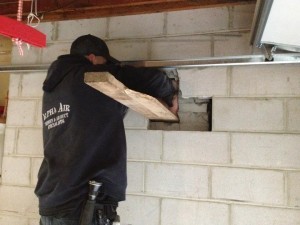Over time, even the sturdiest chimneys will begin to deteriorate due to weather exposure, moisture, and general wear and tear. That’s when it’s time to schedule professional chimney restoration.
But what actually happens during chimney restoration? What do chimney professionals like our team do when we tackle a restoration job? We’ll look at this below, starting with addressing an important question.
Why Do Chimneys Need Professional Restoration?
Over the years, your chimney is exposed to conditions that can lead to damage—especially here in Minnesota. Snow, rain, and high winds can gradually wear down bricks and mortar. Moisture can seep into cracks, leading to more extensive damage if left unchecked. Homes with older chimneys, especially those decades old, are often in need of restoration to ensure they remain safe. In some cases, you may first spot the warning signs during a routine inspection—if you’re not sure, review these ways to tell you’re overdue for chimney cleaning or repair.
Without restoration, chimney problems will worsen, leading to structural trouble, water damage, and even fire hazards. When your chimney starts showing warning signs like cracks, spalling bricks, or leaks, we highly recommend arranging fro chimney restoration in St. Paul, MN with our experts.
What Does Chimney Restoration Include?
Each chimney restoration is different, based on the extent and type of damage, the materials used, and the age of the chimney. Here are some of the most common jobs involved in a professional chimney restoration:
1. Tuckpointing
Tuckpointing is the process of removing damaged or crumbling mortar between bricks and replacing it with fresh mortar. Over time, mortar weakens, and if it isn’t repaired, the chimney’s structural integrity can be compromised. Tuckpointing restores the stability of the chimney and helps prevent water from entering through the joints.
2. Brick Replacement
If individual bricks are cracked or spalling (breaking apart), they will need to be replaced. In some cases, large sections of brickwork may need to be redone to ensure the entire structure remains strong. Matching the new bricks to the original ones can also preserve the aesthetic appeal of your chimney.
3. Crown Repair or Replacement
The chimney crown—the concrete or mortar cap at the top—helps prevent water from entering the flue. When the crown is cracked or deteriorating, water can leak inside, leading to costly damage. Restoring or replacing the crown is essential for protecting the chimney from future weather-related issues. Learn more about why chimney crowns matter and when you might need a replacement.
4. Flue Liner Repair or Relining
The flue liner protects the inside of your chimney from heat and corrosive gases. If the liner is cracked or damaged, it can create a fire hazard. Restoring the chimney often involves repairing or completely relining the flue with materials such as stainless steel or ceramic tiles to ensure safety and efficiency.
5. Waterproofing
Moisture is the biggest enemy of chimneys, and even after repairs are made, it’s important to take preventive measures. Many chimney restoration projects include applying a waterproof sealant to the exterior brickwork. This sealant helps prevent future water damage while allowing the masonry to breathe.
6. Rebuilding
In extreme cases, if the chimney has sustained extensive damage or has started leaning, a full or partial rebuild may be required. This involves dismantling the damaged section and reconstructing it to ensure it meets current safety codes and standards.
Your Local Chimney Restoration Professionals
2nd Generation Chimneys has the expertise and experience needed to restore your chimney to top condition. From minor repairs to complete rebuilds, we’re committed to ensuring your home’s safety and comfort. And because we are recognized industry leaders, you can trust the work we perform—our team proudly holds a Certified Chimney Professional designation for your peace of mind.
2nd Generation Chimneys, Inc. serves Minneapolis, St. Paul and the Surrounding Communities. Contact us today to learn more about chimney restoration.

